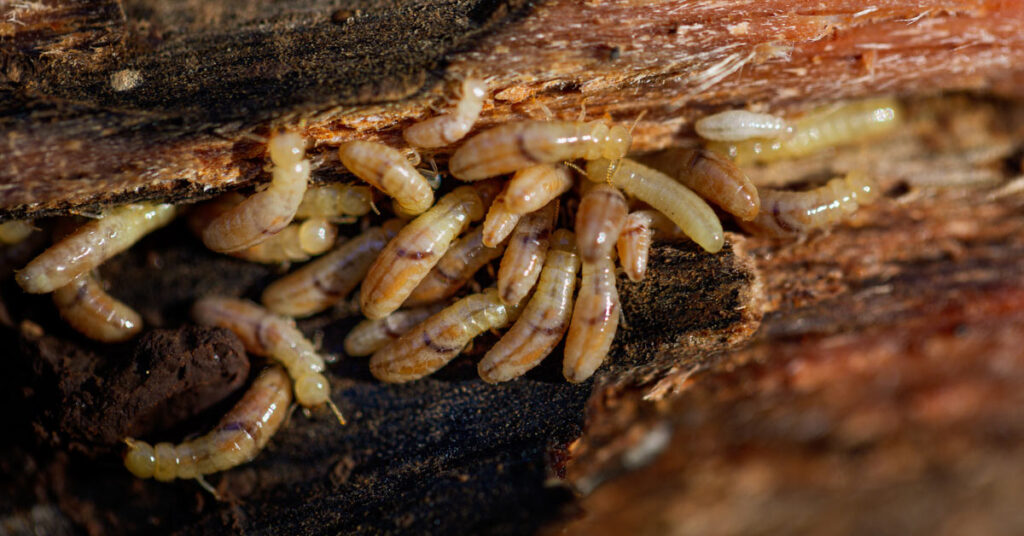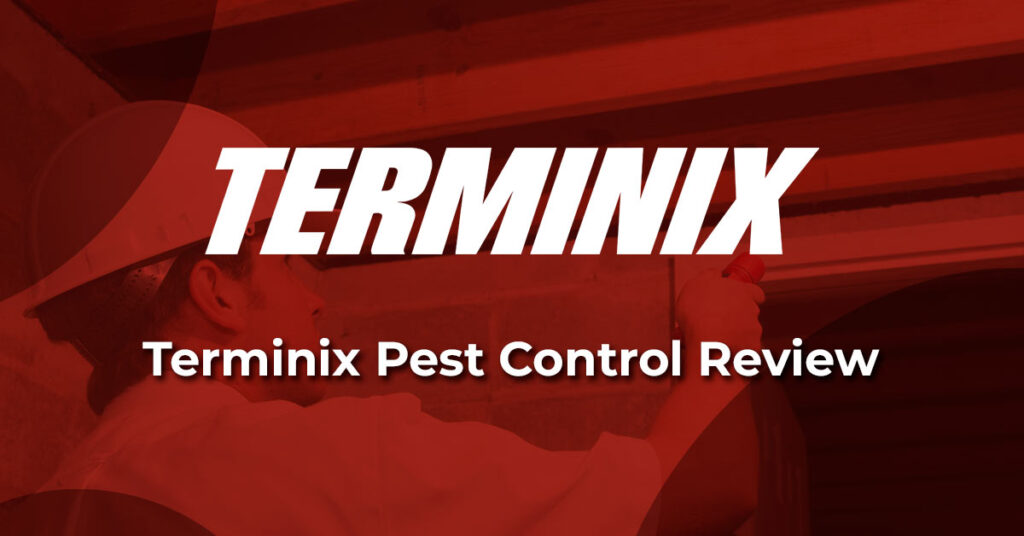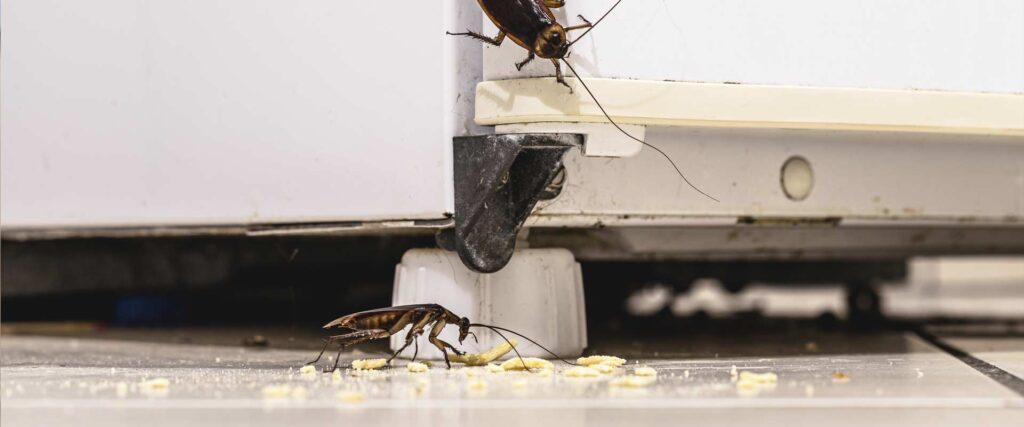Termites undergo a complex lifecycle consisting of distinct stages that contribute to the development and survival of their colonies. The lifecycle begins with the queen laying eggs, which incubate before hatching into nymphs. These nymphs molt and mature into different castes, primarily workers responsible for tasks like foraging and nest maintenance, and soldiers specialized in colony defense. Some nymphs develop into winged reproductive individuals called alates, initiating swarming to establish new colonies. During swarming, successful mates shed their wings, with the female becoming the queen and the male becoming the king, dedicated to reproduction and colony support.

The duration of the termite lifecycle can vary based on factors such as termite species, environmental conditions, food availability, and colony size. It typically takes several years for a termite colony to mature and reach its full potential. Understanding the different stages of the termite lifecycle is crucial for effective termite control and prevention strategies. By targeting key stages like swarming or disrupting worker activities, it becomes possible to manage infestations and protect structures from termite damage.
The Beginning: Eggs And Hatching
Termite eggs mark the starting point of a termite’s lifecycle and play a crucial role in colony growth. Understanding the characteristics of termite eggs, their laying process, factors affecting hatching, and the time it takes for eggs to hatch provides valuable insights into termite behavior and population dynamics.
Termite Eggs
Termite eggs are tiny, oval-shaped, and typically translucent or white in color. They are soft-shelled and delicate, allowing gas exchange to occur during the incubation period. The eggs are typically laid in hidden and protected areas, such as underground, within mud tubes, or in galleries within the wood. The exact location and arrangement of termite eggs can vary depending on the species, but they are usually clustered together in groups.
Termite queens, the primary reproductive members of the colony, are responsible for laying eggs. The number of eggs a queen can produce varies depending on the species, with some queens capable of laying thousands of eggs each day. The queen is attended by workers who provide her with food and care, ensuring a continuous supply of eggs for colony growth.
Factors Affecting Termite Egg Hatching
Several factors influence the hatching of termite eggs. The most significant factors include temperature, humidity, and the nutritional state of the colony. Optimal temperature and humidity levels are vital for successful egg development and hatching. Termites are highly sensitive to environmental conditions, and extremes in temperature or humidity can negatively impact egg viability.
Additionally, the nutritional state of the colony plays a role in egg hatching. If the colony is facing food scarcity or inadequate nutrition, the reproductive individuals may prioritize survival over reproduction, resulting in delayed or reduced egg production. Adequate access to a suitable food source is crucial for optimal egg-hatching rates.
Incubation Time For Termite Eggs To Hatch
The time it takes for termite eggs to hatch varies depending on multiple factors, including termite species, environmental conditions, and the developmental stage of the eggs. Generally, it takes several weeks to a few months for termite eggs to hatch. Some species have a shorter incubation period, while others may have a more extended period before hatching occurs.
The incubation period can be influenced by temperature, with warmer temperatures typically speeding up egg development and hatching. Additionally, termite eggs may experience developmental delays if conditions are unfavorable or if the colony’s nutritional resources are limited.
-
Best Overall
 Save $50 on your first recurring service today with code GET50
Save $50 on your first recurring service today with code GET50 -
Best for Termites
 Save $50 on pest control services with code SAVE50 at checkout
Save $50 on pest control services with code SAVE50 at checkout -
Best for Bed Bugs
 Get a free estimate on pest control services for your home
Get a free estimate on pest control services for your home -
Best for Wildlife Removal
 Call For A Fast & FREE Phone Estimate Today
Call For A Fast & FREE Phone Estimate Today -
Best for Natural Treatment
 Get $100 Off Your Termite Treatment Service
Get $100 Off Your Termite Treatment Service
Stage One: Larvae And Molting
The larvae stage is a crucial phase in the lifecycle of termites, serving various roles in the colony’s growth and functioning. Understanding the role of termite larvae, the molting process they undergo, and the environmental factors that influence their development provides insights into the dynamics of termite colonies.
Role Of Termite Larvae In The Colony
Termite larvae play a vital role in the colony as they are responsible for the growth and development of the colony’s population. They require constant care and nourishment from worker termites. The primary role of the larvae is to consume food and convert it into energy and nutrients, contributing to the overall growth and maintenance of the colony.
Larvae also serve as the foundation for future caste differentiation within the termite colony. Depending on environmental and colony needs, some larvae will develop into workers, while others may differentiate into soldiers or reproductive individuals. The fate of the larvae is determined by pheromones and other chemical signals within the colony, ensuring a balanced caste structure.
Molting Process
As larvae grow, they undergo a process called molting, which involves shedding their exoskeletons to accommodate their increasing size. Molting is a vital part of termite development and occurs at regular intervals. During molting, the old exoskeleton is shed, and a new, larger exoskeleton forms underneath.
The frequency of molting varies depending on factors such as termite species, environmental conditions, and the nutritional state of the colony. Generally, termite larvae molt several times throughout their development. The duration between molts can range from a few days to a few weeks, depending on the termite species and the availability of resources for growth.
Larva Development And The Environment
Several environmental factors influence the development of termite larvae. Temperature and humidity are crucial variables that can impact the growth and molting frequency of larvae. Optimal temperature ranges specific to each termite species facilitate proper larval development, while extremes can disrupt growth or lead to mortality.
Humidity levels also play a vital role in larval development. Termites require a suitable level of moisture for proper growth and molting. Insufficient humidity can cause dehydration and hinder the molting process, leading to developmental issues.
Furthermore, the availability and quality of food resources can affect larval development. A nutritious diet contributes to healthy larval growth and development. Adequate access to cellulose-rich materials, such as wood or plant matter, is essential for the larvae to thrive.
Stage Two: Nymphs And Development
The transition from larvae to nymphs marks an important stage in the termite lifecycle. Nymphs play a crucial role in the growth and functioning of the termite colony. Understanding the process of transition, nymphal development and growth, and the significance of nymphs provides valuable insights into the dynamics of termite colonies.
Transition From Larvae To Nymphs
As the termite larvae continue to grow, they undergo a process of differentiation, transitioning into nymphs. This transition is guided by chemical signals within the colony and is influenced by factors such as environmental conditions and colony needs. The exact mechanisms triggering the transition from larvae to nymphs are not yet fully understood but involve hormonal changes and environmental cues.
Nymphal Development And Growth
Once the larvae have transitioned into nymphs, they begin to exhibit characteristics of adult termites but on a smaller scale. Nymphs resemble adult termites in body structure and segmentation but are generally smaller in size. They continue to molt periodically to accommodate their growth, shedding their exoskeletons and developing new ones.
During nymphal development, the size and characteristics of the nymphs can vary based on their caste fate within the colony. Some nymphs will differentiate into workers, responsible for tasks such as foraging and nest maintenance. Others may develop into soldiers, specialized in defending the colony against threats. Additionally, some nymphs may develop into reproductive individuals, capable of initiating swarming and establishing new colonies.
Nymphs In The Termite Lifecycle
Nymphs play a vital role in the overall functioning and growth of the termite colony. They contribute to colony expansion by maturing into various castes necessary for colony maintenance, defense, and reproduction. The differentiation of nymphs into workers ensures the continuous supply of resources and sustains the growth and well-being of the colony.
Nymphs are also involved in the construction and maintenance of the termite nest. They contribute to the expansion and modification of the nest structure as the colony grows, creating galleries, tunnels, and chambers. This collective effort of the nymphs helps provide a suitable habitat for the entire termite colony.
Furthermore, nymphs contribute to the flexibility and adaptability of termite colonies. They have the potential to differentiate into different castes based on the colony’s needs, enabling the colony to respond to changing environmental conditions or threats. This adaptability is critical for the long-term survival and success of the termite colony.
Reproduction And Swarming
Reproduction and swarming are crucial events in the lifecycle of termites. Understanding termite reproductive behaviors, the purpose and formation of termite swarms, as well as the timeframe and aftermath of swarming, provides insights into the establishment of new colonies and the expansion of termite populations.
Termite Reproductive Behaviors
Termites have a highly organized system of reproductive behaviors within their colonies. Termite colonies typically consist of a single or a few reproductive pairs, known as the king and queen. These reproductive individuals are responsible for the production of eggs and the continuation of the colony.
Reproductive behaviors in termites can vary based on the termite species. Some species have primary and secondary reproductives, where secondary reproductives assist the primary king and queen in reproduction. In other species, the primary king and queen are the sole reproductive individuals.
Formation Of Termite Swarms
Termite swarms serve the purpose of establishing new colonies and expanding the termite population. Swarming is a synchronized event where reproductive termites, also known as alates or swarmers, leave the parent colony in large numbers. Swarms typically occur during specific seasons when environmental conditions are favorable, such as warm and humid conditions.
The formation of termite swarms involves several factors. The colony releases pheromones, chemical signals, to coordinate the swarming event. These pheromones attract alates from multiple colonies to gather in a centralized location. Once the alates have gathered, they take flight, forming a visible swarm. During the swarm, the alates engage in mating flights, where males and females find suitable mates to initiate new colonies.
Timeframe Of Termite Swarming
The timeframe of termite swarming varies depending on factors such as termite species and local environmental conditions. Swarming events can last for a few hours to several days. The timing of swarms is typically predictable for specific termite species and can be influenced by factors such as temperature, humidity, and the presence of winged reproductive individuals within the colony.
After the swarming event, successful mating pairs shed their wings and search for suitable locations to establish new colonies. The queen and king termites assume their roles within the new colony, with the queen being responsible for laying eggs and the king assisting in colony maintenance and defense.
The aftermath of swarming involves the establishment of new termite colonies. The success rate of establishing a new colony is relatively low, as many factors, including predation, environmental conditions, and resource availability, can impact the survival and growth of the new colony. It can take several years for a newly established termite colony to develop and reach maturity.
Colony Growth: Workers And Soldiers
The growth and functioning of a termite colony heavily rely on the division of labor among different castes, primarily workers and soldiers. Understanding the significance of termite workers, the division of labor within the colony, the lifespan and roles of workers, as well as the differentiation between workers and soldiers, provides valuable insights into the dynamics of termite colonies.
Termite Workers
Termite workers are a crucial caste within the colony, comprising the majority of individuals. They perform a wide range of essential tasks that contribute to the colony’s growth, maintenance, and survival. The significance of workers lies in their ability to provide resources and support for the entire colony.
Workers are responsible for foraging and acquiring food resources. They explore their surroundings, often underground or within the wood, searching for cellulose-rich materials to feed the colony. They break down the wood into digestible forms through microbial symbionts in their digestive system, enabling the colony to utilize this energy source.
Additionally, workers are involved in constructing and maintaining the termite nest. They build intricate tunnel systems, galleries, and chambers, ensuring the structural integrity of the nest and providing suitable environments for the colony. Workers also care for the eggs, larvae, and nymphs, ensuring their nourishment and protection.
Lifespan Of Termite Workers
Termite workers have relatively short lifespans compared to other castes within the colony. The exact lifespan of termite workers can vary depending on factors such as termite species, environmental conditions, and the tasks they perform. On average, termite workers live for a few months to a few years. Environmental conditions, including temperature, humidity, and the availability of food resources, play a significant role in determining worker lifespan. The tasks performed by workers, such as foraging, nest maintenance, and brood care, can also influence their longevity.
Differentiation Of Workers And Soldiers
Within the termite colony, the differentiation between workers and soldiers is a result of hormonal and chemical signals. These signals guide the development of individuals toward specific castes based on the colony’s needs.
Workers and soldiers exhibit distinct physical characteristics. Workers have relatively smaller body sizes and lack specialized features for defense. They possess mandibles suited for tasks such as gathering food and building. Soldiers, in contrast, have enlarged heads and powerful jaws, making them specialized for colony defense. Their mandibles are adapted for combat, enabling them to ward off intruders.
Differentiation between workers and soldiers is vital for maintaining a functional colony. The ratio of workers to soldiers within the colony is regulated based on various factors such as colony size, available resources, and potential threats. This balance ensures efficient resource acquisition, defense, and overall colony stability.
Queen And Colony Establishment
The queen holds a central and influential role in the establishment and growth of a termite colony. Understanding the influence of the queen, the effects of queen loss on the colony, and the possibility of multiple queens provides valuable insights into the dynamics of termite colonies and their reproductive success.
The Queen In Termite Colonies
The queen termite is the primary reproductive individual in the colony and holds immense influence over its development. Her primary role is to lay eggs and ensure the continuation of the colony. Queen termites have an impressive reproductive capacity, capable of laying thousands of eggs each day.
The pheromones produced by the queen regulate the behaviors and functions of other colony members. These chemical signals help maintain colony cohesion, stimulate worker activity, suppress the development of reproductive capabilities in other individuals, and even influence the differentiation of castes within the colony. The presence of the queen provides a strong sense of colony identity and reproductive stability.
What Happens When A Queen Termite Dies?
The loss of the queen can have significant effects on the colony. Without a queen, the colony loses its ability to produce new eggs and replace workers and soldiers as they die. The absence of the queen disrupts the reproductive balance within the colony and can lead to a decline in population size.
Queen loss can trigger a series of responses within the colony. Workers may attempt to produce replacement queens by nourishing and developing potential reproductives, known as neotenic individuals. However, these replacement queens are usually not as successful in reproducing and maintaining the colony as the original queen.
The effects of queen loss on a termite colony can vary depending on factors such as termite species, colony size, available resources, and the stage of colony development. Some termite species are more resilient to queen loss, as they possess mechanisms to promote the development of replacement queens or have the ability to establish new colonies through secondary reproductives.
Possibility Of Multiple Queens In A Termite Colony
Certain termite species have the ability to establish colonies with multiple queens. In such colonies, multiple queens coexist and contribute to the reproduction and growth of the colony. The presence of multiple queens can enhance the reproductive output of the colony, leading to faster population growth and colony expansion.
The exact mechanisms of queen interactions and cooperation within a colony with multiple queens are still being studied. It is believed that pheromones and chemical signals play a role in regulating queen behavior and maintaining reproductive harmony. The presence of multiple queens provides redundancy and ensures the reproductive stability of the colony even if one queen fails or is lost.
However, not all termite species have the capacity for multiple queens. Some termite colonies rely on a single primary queen, while others may have a single queen with a few secondary reproductives assisting in reproduction. The reproductive strategy of a termite species is influenced by various factors, including environmental conditions and the evolutionary history of the species.
Defense Mechanisms Of Termites
Termites have evolved various defense mechanisms to protect their colonies from threats. Understanding the defense strategies employed by termites, the primary threats they face, and the impact of termite activity on ecosystems provides valuable insights into the interactions between termites and their environment.
Defense Strategies Employed By Termites
Termites have developed several defense mechanisms to safeguard their colonies. These mechanisms can be classified into physical, chemical, and behavioral strategies.
Physical defenses include constructing intricate tunnel systems and nests that provide protection from predators and environmental conditions. Termites build mud tubes and galleries, which serve as pathways connecting their nests to food sources while providing shelter and maintaining a controlled microclimate.
Chemical defenses are employed through the secretion of defensive compounds. Termites produce chemical signals, known as alarm pheromones, to communicate and coordinate defensive responses. These pheromones alert other colony members to the presence of danger, triggering specific behaviors such as increased soldier deployment or closing off tunnel entrances.
Behavioral defenses involve the coordinated actions of colony members. When threatened, termites may retreat into their nest or close off entrances using specialized soldier termites that possess larger heads and powerful jaws. Soldiers use their mandibles to ward off intruders, protecting the colony from predators or rival termite colonies.
-
Best Overall
 Save $50 on your first recurring service today with code GET50
Save $50 on your first recurring service today with code GET50 -
Best for Termites
 Save $50 on pest control services with code SAVE50 at checkout
Save $50 on pest control services with code SAVE50 at checkout -
Best for Bed Bugs
 Get a free estimate on pest control services for your home
Get a free estimate on pest control services for your home -
Best for Wildlife Removal
 Call For A Fast & FREE Phone Estimate Today
Call For A Fast & FREE Phone Estimate Today -
Best for Natural Treatment
 Get $100 Off Your Termite Treatment Service
Get $100 Off Your Termite Treatment Service
Primary Threats To Termite Colonies
Termites face several threats in their natural habitats. Predation by other animals is a significant threat to termite colonies. Ants, certain beetle species, and other insect predators target termites for food. Termite soldiers and physical nest defenses help deter these predators, but some predators have evolved strategies to overcome termite defenses.
Environmental conditions can also pose threats to termite colonies. Extreme temperatures, fluctuations in humidity levels, and flooding can disrupt termite nests and impact colony survival. Exposure to sunlight can be particularly harmful to termites, as they are susceptible to desiccation.
Human activities can also pose threats to termite colonies. Deforestation, urbanization, and the use of termiticides for pest control can directly impact termite populations and habitats. Additionally, disturbance or destruction of termite nests during construction or land clearing can displace or destroy entire colonies.
Impact Of Termite Activity On Ecosystems
Termites play significant roles in ecosystems and can have both positive and negative impacts. In ecosystems, termites are considered ecosystem engineers as they modify their habitats by building nests, tunneling through the soil, and recycling organic matter.
Termites contribute to soil fertility by breaking down plant materials, such as wood and leaf litter, into nutrient-rich humus. Their feeding activities enhance nutrient cycling and increase soil porosity, which improves water infiltration and aeration.
On the other hand, termite activity can have negative impacts. In agricultural settings, termites can damage crops and wooden structures, leading to economic losses. Termites also contribute to the decomposition of dead wood in forests, which can affect timber quality and decrease the longevity of wooden structures.
Conclusion
Understanding the termite lifecycle, identifying signs of infestation, and implementing proactive prevention and control measures are crucial for effectively managing termite populations. By taking early action and employing preventive strategies, property owners can safeguard their structures, minimize damage, and maintain a harmonious balance between termites and their ecosystems.







